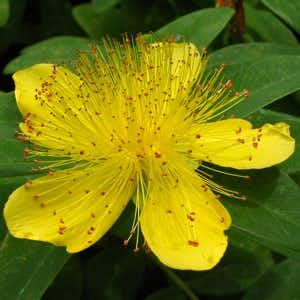
Like many of our readers, we are always delighted to learn that a natural product may work as well as a pharmaceutical for a particular problem. It is always important to remember that most compounds that have physiological benefits may also have the potential for unwanted effects as well. That is certainly the case with the herbal medicine known as St. John’s wort (Hypericum perforatum).
Q. I’m a fairly high-strung person, more prone to anxiety than many people, though it’s really not bad enough to warrant me using a prescription drug. I recently discovered that St. John’s wort works just right for me. I’m much more calm and cheerful now!
I also do many outside activities; I’m in the sun all summer. So you can imagine how concerned I am to read that St. John’s wort in bright sunlight can cause cataracts. Even with sunglasses? Please say it isn’t so.
A. No one knows quite how St. John’s wort (Hypericum perforatum) works to alleviate anxiety and depression, but there is evidence that it can be helpful (Phytotherapy Research, May, 2014).
Drawbacks of St. John’s Wort
There are some drawbacks of St. John’s wort. This botanical medicine can interact with many other medications. It makes sense to ask the pharmacist before you add it to your regimen.
Of more concern to you, the compound hypericin found in St. John’s wort and often included in the extract can damage cell membranes when exposed to light (Photochemistry and Photobiology, May-June, 2007). This may increase the risk for macular degeneration. It can also damage crystalline structures in the lens, possibly promoting the formation of cataracts (Photochemistry and Photobiology, Aug., 2000).
An epidemiological study found that people who reported having cataracts were more likely than others to say they had used St. John’s wort (Current Eye Research, Oct., 2009).
Protecting the Eyes
The scientists who examined the action of hypericin stressed that the eyes must be protected from intense sunlight while a person is taking St. John’s wort. One of them, Joan Roberts, PhD, told us that sunglasses encourage the pupils to open wider so that more visible light can get into the eye.
In the presence of hypericin, that could pose a problem. You may need to limit your outdoor activities to times when the sun is not bright or find another approach for calming anxiety.
We trust that you are also taking care to protect your skin; this same photochemical reaction could cause an exaggerated sunburn in exposed skin.

